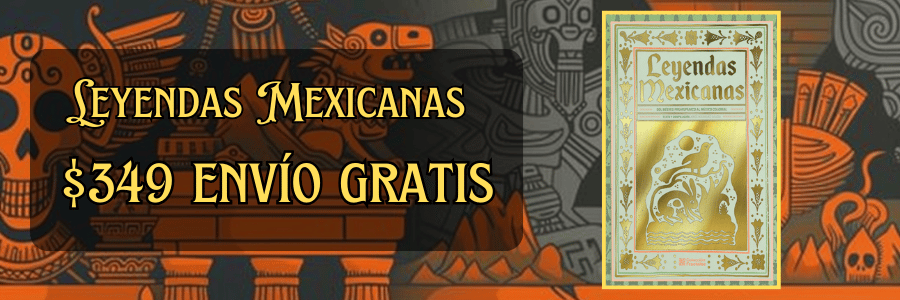The Role of Juan Aldama in Mexico’s Fight for Independence
Juan Aldama was a prominent figure in Mexico's struggle for independence, playing a pivotal role during a time when the desire for freedom from Spanish colonial rule was burgeoning. Born on January 3, 1774, in the town of San Miguel el Grande, now known as San Miguel de Allende, Aldama came from an affluent family that allowed him to receive a good education. His experiences shaped his understanding of the social injustices and the plight of the lower classes, which would inform his actions during the independence movement.
Historically, Mexico's independence movement can be traced back to the early 19th century when the Spanish crown enforced heavy taxes and restricted trade, further exacerbating tensions among the colonial populace. The formation of Creole identity during this time—the desire for self-identity among those of Spanish descent born in the Americas—led to discontent amongst the Creoles who were barred from holding high governmental positions and were subjected to the authority of peninsulares, those born in Spain. The inequality and corruption of the ruling elite fueled the frustration that would eventually catalyze a national rebellion, and it was amidst this growing unrest that Aldama began to engage in revolutionary activities.
Around the turn of the century, discontent manifested in various clandestine meetings among the Creole elite and intellectuals. They discussed reforms, autonomy, and ultimately independence. Aldama, given his connections and social standing, became involved with leaders like Miguel Hidalgo y Costilla, a parish priest in the town of Dolores who would become one of the primary figures of the independence movement. In the crucial years leading up to 1810, Aldama's activities increasingly included clandestine meetings that focused on inciting revolt against the Spanish authorities.
On September 16, 1810, an event that would change the course of Mexican history transpired when Hidalgo issued a call to arms, known as the Grito de Dolores. Aldama was instrumental in rallying support for Hidalgo's movement. With Hidalgo's encouragement, Aldama took charge of the insurgents' forces in the northern territories. His organizational abilities and military mind allowed him to effectively lead troops across various conflicts, capturing key cities as they advanced. Aldama’s presence in these early battles galvanized many locals to join the fight, enhancing the numbers and expanding the geographical scope of the revolution.
As the rebellion took shape, Aldama became more than just a military leader; he proved crucial in maintaining alliances and fostering relationships among various factions within the independence movement. Recognizing the complexities of the struggle, he understood that success would rely heavily on securing the support of different segments of society, from indigenous groups to dissatisfied Creoles and mestizos. His diplomatic skills were essential as he worked to unify disparate groups, setting the foundation for a more coordinated fight against colonial rule.
Aldama was deeply involved in several major battles, showcasing his leadership capabilities and martial prowess. Notable engagements included skirmishes at Guanajuato and Valladolid, where his strategies and courage played significant parts in bolstering morale among the ranks of the insurgents. His involvement extended to providing critical support strategies and rallying fighters around the rebel cause, making him a key player in the early phases of the independence movement.
As the independence movement unfolded, internal divisions began to surface, proving to be detrimental to the cohesion of the cause. Differing objectives and strategies began to cause rifts among revolutionary leaders, leading to a series of power struggles. Aldama was aware that these infighting dynamics could be detrimental. Though he attempted to mediate and resolve growing tensions, the disunity among the ranks ultimately led to a schism that weakened their collective strength against the Spanish military.
In January 1811, following a series of victories, the rebellion seemed to gain momentum. However, things took a turn for the worse when Hidalgo was captured and executed by the Spanish authorities. This pivotal moment in the independence movement devastated many, including Aldama. Nevertheless, he remained committed to the cause, carrying on the fight even as new leaders emerged. His relentless pursuit of independence revealed his belief that the struggle must continue regardless of setback, a sentiment that resonated with many Mexicans who had rallied against colonial oppression.
As the conflict progressed, Aldama formed alliances with other revolutionary leaders who took the mantle after Hidalgo’s demise, such as José María Morelos and Vicente Guerrero. Aldama’s ability to collaborate with new figures, while continuing to build on Hidalgo's legacy, highlighted his adaptability and resilience. His military campaigns included the reinforcement of troops and strategic planning against Spanish forces. Each skirmish and battle honed Aldama's leadership capabilities, presenting moments to test his resolve and commitment to the cause.
Jose Maria Morelos eventually became the leader of the independence movement, and Aldama continued to serve under him, showcasing loyalty to a shared vision of freedom. He contributed significantly during the war's various phases, often risking personal safety for the movement’s success. Aldama was not just a soldier; he became a tactician, informing strategic decisions that were crucial to sustaining the momentum of the revolt. His experience in warfare and skills in combat led to the trafficking of supplies and reinforcements across various territories, which helped sustain the revolutionary forces.
Despite efforts to unify and rebuild, the struggle faced numerous challenges, including division among leaders and varying ideologies within the independence movement. In the face of increasing Spanish repression, the insurgents endured significant losses. Aldama's tenacity and dedication remained strong, as he continued to appeal to the broader populace, reminding them of the injustices endured under colonial rule and urging them to fight for a better future.
Tragically, Aldama's story would meet an untimely end. In 1811, he was arrested near the battlefield of Aculco after a series of escalating military confrontations. His capture was a considerable loss to the independence movement, stripping them of a charismatic and effective leader who had articulated the desire for independence and had fought vigorously against the crown. Following his arrest, Aldama was executed on July 24, 1811, in a display of brutal force by the colonial authorities.
The legacy of Juan Aldama, however, would endure long after his death. His actions inspired countless others, and the ideals he fought for laid the groundwork for future leaders and movements striving for freedom and equality. Alongside Hidalgo and Morelos, Aldama is celebrated as one of the key figures in Mexico's fight for independence, symbolizing courage, sacrifice, and an unwavering commitment to the cause of liberation.
In contemporary Mexico, Aldama's contributions are remembered during independence commemorations and historical discussions. His image and legacy serve as a testament to the collective struggle of a nation that sought to define itself outside of colonial rule. Aldama's involvement in the independence movement is a vital reflection of the broad and diverse forces that contributed to a sweeping change of governance—one that sought to implement ideals of liberty, justice, and a nation-state that could stand sovereign on its own.
In summation, the role of Juan Aldama in Mexico’s fight for independence was not merely that of a soldier; he emerged as a visionary leader, strategist, and symbol of resistance. His conviction to overthrow colonial rule fueled a struggle that would ultimately reshape the terrains of Mexico, echoing through history as a reflection of the nation’s quest for autonomy and self-identity. The narrative of Aldama—and others like him—remind current generations of the price many paid for freedom and the enduring spirit of those who sought to realize a fully independent Mexico.
Explore More:
| How the Mexican Revolution Changed the Role of the Catholic Church |
| Education and Schools in Colonial Mexico |
| Women’s Rights in Mexico: Progress and Struggles After the Revolution |
| How the French Invasion of Mexico Impacted the Mexican Monarchy |
| The Artistic Legacy of Mexico’s Colonial Period: From Paintings to Sculpture |
| The Role of Oil in the Development of Alternative Fuels |
| How Mexican Artists Are Reimagining Their Cultural Roots |
| The Artistic Expression of Mexico’s Indigenous Communities |
| The Role of the Chichimeca in the Silver Mining Boom of Zacatecas |
| The Diplomacy of the French Intervention: Letters and Treaties |



